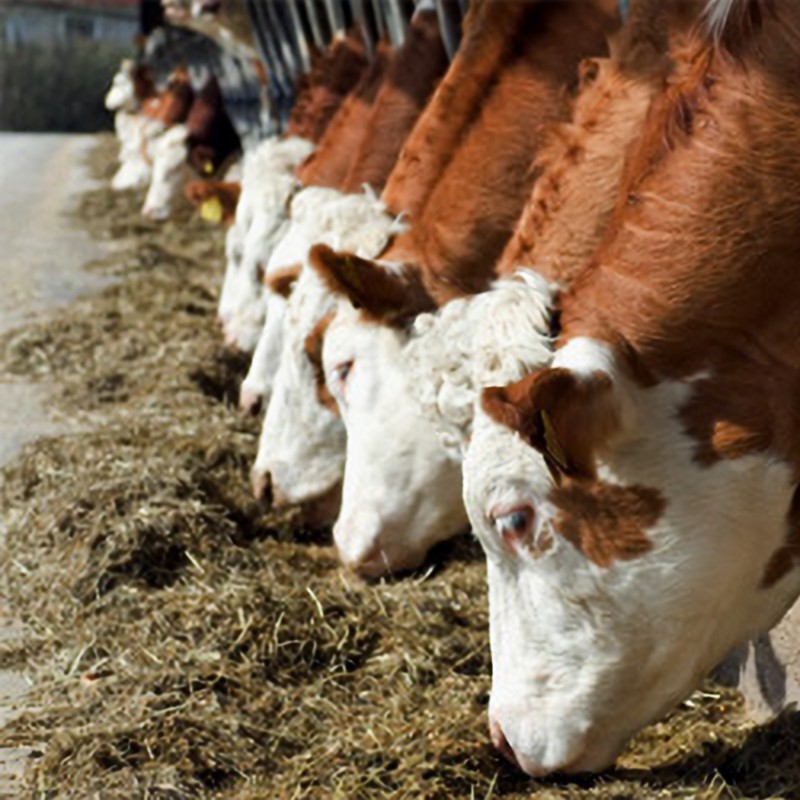The additional demand for feed raises concerns surrounding animal welfare and environmental pollution which are major challenges facing the future of the feed industry. Hence, the rising demand for valuable, animal-derived food products can only be met by sustainable agriculture systems. The future of livestock production is reliant on the application of raw ingredients in feed supplies. Moreover, the global production of animal feed is often subject to unstable markets since the feed industry relies heavily on co/by-products and wastes of the food industry, as well as relying on ingredients used to produce human foods. Hence, it is vital that animal feed manufacturers are able to source sustainable, safe, competitive and secured resources (der Poel et al., 2020).

Soybean is an important source of protein and energy used for both human and animal feeding. Soybean is primarily used to produce vegetable oil and oilseed meal for animal feeding. It is an annual crop that originates from East Asia but is now grown over a large geographical area with the leading producer countries being Brazil, USA, Argentina, and China. Globally, there is a high demand for Soybean meal (SBM) for livestock production, this is predominately driven by a shift from dependance on vegetable protein to animal protein in human diets. Soybean contains between 44-48% Crude Protein and higher metabolizable energy (ME) Kcal/kg than most other plant protein sources. Additionally, soybean contains an excellent balance of amino acids, with the exception of Methionine which tends to be low. However, SBM is rich in amino acids Lysine, Tryptophan, Threonine, Isoleucine and Valine which are often deficient in cereal grains such as Maize that is most commonly used in livestock diets. Recently, the European Union introduced a ban on all terrestrial feed ingredients such as fish meal, bone meal and meat meal in pig and poultry feeding which has also increased the reliance on SBM as a primary ingredient in non-ruminant feeding (El-Shemy, 2011).
Rapeseed is the world’s second leading source of protein meal after soybean meal. Rapeseed meal contains between 33-40% crude protein with high levels of lysine, methionine, and tryptophan. Globally, the major contributors of rapeseed production are China, India, EU, and Canada. In temperate climates, such as the United Kingdom and Ireland, oilseed rape is the only widely grown commercially viable crop that produces an edible oil. The rapeseed meal that is produced from the extraction of oilseed rape is globally used as a high protein feed for livestock. Also, the use of whole oilseed rape as feed has become increasingly popular in recent years since the oil provides a concentrated source of energy. While rapeseed meal is an excellent source of protein, the protein is less digestible than that of soybean meal however, the amino acids balance is better than soybean meal (Nega and Woldes, 2018).
Another protein source is Sunflower meal (SFM), which is produced from the seed of the sunflower plant and is obtained after the oil is extracted from the seed. Sunflower meal is primarily used in food rations for ruminants and poultry. The crude protein content of SFM is between 36-40%, yet the inadequate content of lysine means that it is better suited to ruminants than nonruminants (Pedroche, 2015). Moreover, in comparison to soybean, sunflower meal contains a lower energy and lysine content but has a higher fibre and methionine content (Sánchez-Muniz and Cuesta, 2003). Currently, sunflower meal is mainly used in the diets of rabbits and ruminants. However, hulled sunflower meal has an increased protein content of 40% and can be incorporated into the diets of pigs and broilers (Pedroche, 2015).
References
DER POEL, A. F. B. V., ABDOLLAHI, M. R., CHENG, H., COLOVIC, R., DEN HARTOG, L. A., MILADINOVIC, D., PAGE, G., SIJSSENS, K., SMILLIE, J. F., THOMAS, M., WANG, W., YU, P. & HENDRIKS, W. H. 2020. Future directions of animal feed technology research to meet the challenges of a changing world. Animal Feed Science and Technology, 270, 114692.
EL-SHEMY, H. 2011. Soybean and nutrition, BoD–Books on Demand.
NEGA, T. & WOLDES, Y. 2018. Review on nutritional limitations and opportunities of using rapeseed meal and other rape seed by-products in animal feeding. Nutritional Health and Food Engineering, 8, 43-48.
PEDROCHE, J. 2015. 13 – Utilization of Sunflower Proteins. In: MARTÍNEZ-FORCE, E., DUNFORD, N. T. & SALAS, J. J. (eds.) Sunflower. AOCS Press.
SÁNCHEZ-MUNIZ, F. J. & CUESTA, C. 2003. SUNFLOWER OIL. In: CABALLERO, B. (ed.) Encyclopedia of Food Sciences and Nutrition (Second Edition). Oxford: Academic Press.